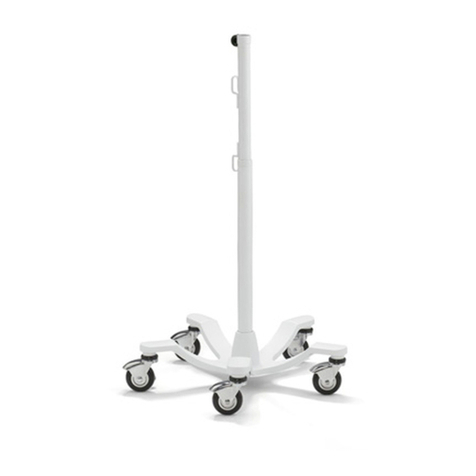
4 5
binoculars’ field of view. Likewise, it is very possible that when you center a star in
the binocular field of view and then glance up to identify it on the smartphone app’s
star chart, that star will appear off-center. That’s just the nature of the phone’s
digital compass and/or gyroscope – they are not pinpoint accurate! But even given
that caveat, you will still have no problem identifying and finding objects using this
high-tech method of binocular stargazing.
So, then, what’s the best way to use a smartphone in the Smartphone Holder for
binocular stargazing? For locating a star or celestial object, find it on your star
chart app and position the binocular so that the object is centered on the phone’s
display screen. Then, holding the binocular in that position, look into the binocular
and see if the object appears in the field of view. If it does, that’s great! If it does
not, just “sweep” around the area by moving the binoculars slowly in a tight circle
until you see it. (Of course, you should focus the binoculars at infinity beforehand.)
In this way the smartphone held in the Smartphone Holder atop the binoculars
will help you locate objects much faster than if you were using a paper star chart.
For identifying an unknown star, planet, or other celestial object that you see in
your binoculars, center it in the binoculars’ field of view, then glance up at the
smartphone’s screen and see what object lies close to the center on the star chart.
If the object is not precisely in the middle of the display it is likely to be close by
and distinguishable by type of object, brightness, etc., compared to surrounding
objects. You’ll quickly be able to identify countless objects in the night sky using
your astronomy app-equipped smartphone as your mentor.
The Smartphone Holder allows your phone to be oriented in either portrait (verti-
cal) or landscape (horizontal) orientation (Figure 4), and can easily be rotated
from one orientation to the other. On the back of the holder is a sliding tab that
locks the holder’s position (Figure 5), though you probably will not need to use
3. Now squeeze the side rails inward
from the base of the rails (not
the top of the rails, which could
break them) until they contact
the phone and the phone is snug
in the holder (Figure 3). You’ll
hear a clicking sound as the rails
are pushed inward; the clicking
will stop when the rails are snug
against the phone.
To remove your phone from the holder,
grasp the phone with one hand, then
with the other press the release button
to spring the side rails outward.
NOTE: When your smartphone is
in landscape orientation, its display
screen may not be exactly centered
horizontally over the midline of the bin-
ocular when the mounting bracket is in
the vertical position. If that’s the case,
you can center the display by slightly loosening the attachment knob, then rotating
the bracket slightly while keeping the phone holder horizontal. When the display is
centered over the binocular, retighten the knob to set the bracket in that position.
Using the Holder for Binocular Stargazing
Using an iPhone or other smartphone for stargazing with binoculars can be a great
aid in locating, identifying, and learning about stars, planets, and other celestial
objects in the visible heavens. There are many astronomy apps on the market for
both iOS (Apple) and Android-based smartphones that can show you “what’s up”
in any portion of the sky where you’re aiming. No longer do you need a printed
star map by your side to find your way around the night sky. Now you can just
hold up your smartphone to see a star chart matching the part of the sky you’re
facing, with everything labeled on the phone’s display for easy reference. Orion’s
StarSeek apps (Standard, Pro, and Max) for iPhone, iPod Touch, and iPad are
among the best and most powerful such apps on the market today. They are avail-
able for download exclusively on the iTunes App Store.
While smartphone star chart apps are helpful in locating and identifying celestial
objects, they are limited by the accuracy of the phones’ digital compass. Don’t
expect the same level of accuracy as a computerized telescope’s “GoTo” point-
ing system, which is a different system altogether. With a smartphone, an object
centered on its display may or may not be centered in the field of view of the
binoculars when you look into the eyepieces. Depending on the magnifying power
of your binoculars and the scale of the star map on your smartphone display, i.e.,
how much you’re “zoomed in”, the object may lie off-center or even outside of the
Figure 3. Squeeze the side rails from the
base of the rails, as shown, not at the top
of the rails, until they are snug against the
sides of your smartphone.
Figure 4. You can switch easily between portrait (left) and landscape orientations by just
rotating the holder.
Do not
squeeze the
top of the
side rails!












































